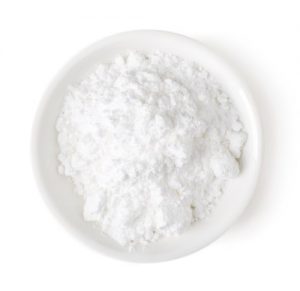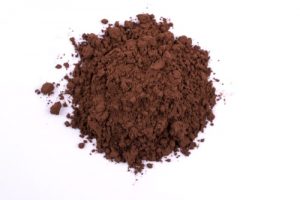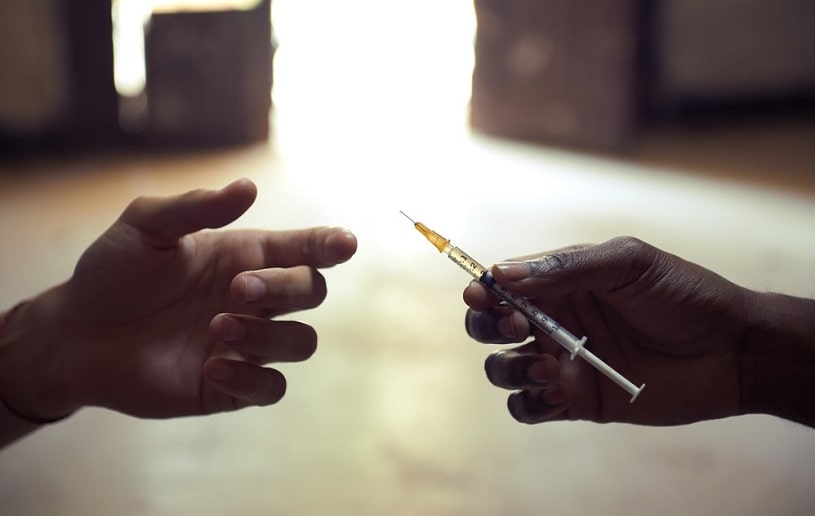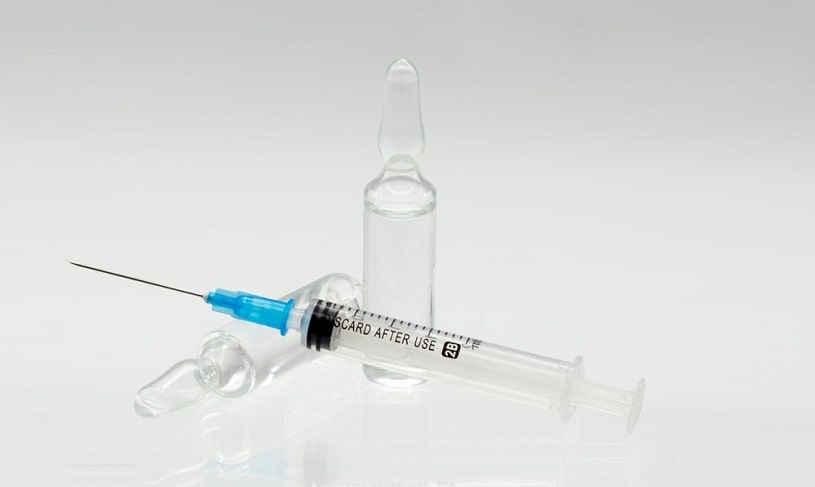Heroin is an illegal substance classified as a schedule I by the DEA due to the very high risk of addiction. People who abuse this substance quickly become physically and psychologically dependent on it.
Considering the relatively high number of substance abusers that come into contact with/become hooked on the drug in the United States, this text seeks to provide an in-depth look into the country’s abuse phenomenon.
Table Of Contents:
Heroin addiction statistics, various forms of the substance, street names, physical characteristics, signs, and symptoms of abuse, and addiction treatment methods are discussed in detail in this article. The text also answers why the substance is so addictive and how one can help if a loved one is believed to be an addict.
What Is Heroin?
This is an illegal schedule I opium derivative that has a high potential for addiction. It is used illicitly for the intense euphoric effect it produces. In terms of drug type, its classification is an opioid that is synthesized from morphine. Morphine is a natural substance found in the poppy plant.
There are Many Forms of the Drug Sold by Street Dealers, Named Under Different Aliases Such as:
- Black Tar
- Smack
- H
- Snowball
- White
- White Lady
- White Horse
- Black Eagle
- Brown Crystal
- Mexican Mud
Heroin Drug Class and Schedule
The substance was classified as Schedule I under the Controlled Substance Act in 1970. Schedule I drugs have a high potential for abuse, they lack accepted safety for use, even under medical supervision. Hence they are not permitted as a form of treatment in the US.
This drug is banned for production, importation, and possession.
Is Heroin A Narcotic?
Narcotic drugs relieve pain, and this is one of them. They reduce the level of pain signals reaching the brain, affecting emotion and sensations.
Is Heroin an Opiate?
Heroin is a semi-synthetic opiate-like Fentanyl. Both are considered to be one of the most dangerous recreational drugs worldwide. Opiates have been in existence for thousands of years now and were derived from poppy plants, widely cultivated in Asia.
Is Heroin an Opioid?
The terms opioid and opiate can be used interchangeably. There is not much difference between the two except that opiates are only naturally derived. Opioid heroin acts on similar receptors in the brain as that with opiates, causing a euphoric feeling. Opioids are quickly metabolized in less than an hour and removed from the body, although some byproducts may persist for three days. The amount used, the method of use and individual metabolism determines how long it stays in a person’s body. The risks for psychological disease and physical dependence are also very high.
Is Heroin A Depressant or Stimulant?
It is a depressant. Similar to other opiates, it slows down the central nervous system and may cause respiratory depression.
What Does Heroin Look Like?
The appearance of heroin in its various forms depends on each type, but what does the substance look like in these forms? For starters, the different types are categorized mainly on purity levels, and they are as follows:
- Fine white powder
- Brown or black powder
- Black tar
Details about the differences between the various types are as follows:
| Fine White Powder | Brown or Black Powder | Black Tar Heroin |
|---|---|---|
 |
 |
 |
| The purest form | A less pure variant mixed with additives | The cheapest, least pure variants and the most common type |
| White in color | Brown or Black in color | Black in color |
| Comes in a powdered form | Comes in a powdered form, albeit with a different color resulting from the introduction of additives. | Comes in a sticky, gel form |
| Usually injected or snorted | Usually smoked | Usually dissolved into liquid and injected |
History of Heroin Use
The history of heroin actually dates back to the ancient Mesopotamian civilization when opium cultivation first began. In the early 19th century, morphine and codeine were isolated from opium. Towards the end of the 19th century, an English chemist synthesized this substance as an alternative to morphine.
Where does Heroin Come from?
The plant grows in different parts of the world, including South East Asia, Mexico, and South America. History shows that the drug became commercially available from the Bayer Pharmaceutical company in 1898. It was originally presented as a non-addictive cure for morphine addiction and cough-inducing illnesses. It was officially approved for general use as a replacement for morphine by the American Medical Association in 1906.
This approval proved to be the catalyst for the outburst of heroin addiction in the country. At the time, there were over 200,000 heroin addicts in New York City alone. In an attempt to curtail the spread of this addiction, the Harrison Narcotics Act was passed in 1914. The act made it illegal to use, own, or be addicted to illegally obtained drugs.
However, the high addiction potential side effects of heroin are unavoidable, and the increase in the number of addicts led to an increase in the crime rate. In 1924, the deputy commissioner of the New York Police reported that heroin addicts were involved in 94% of all the crimes perpetrated in the state. This led to the complete ban on the substance for both medical and illicit use, and it is classified as an illegal substance to this day.
People Who have Developed an Addiction Ingest the Drug in Three Ways:
- Sniffing/snorting: this method of administration is very invasive and can cause major damage to the nose and surrounding areas. Conditions such as a constantly runny nose, collapsed nasal passages, chronic nosebleeds, and saddleback nose are commonly associated with snorting heroin.
- Smoking: just as is the case with smoking other substances, smoking heroin also comes with many dangers, some of which are pulmonary lung infections, shortness of breath, and severe asthma attacks.
- Shooting/injecting: intravenous administration can cause collapsed veins, scarring, clogged vessels, cellular infection/death in some organs, and tissue death.
Regardless of the method of administration, abuse of this substance can lead to overdose and death.
How Do People Become Addicted to Heroin?
The first patient treated for the addiction was admitted in 1910 in the New York Bellevue Hospital, and the number of adult users has continued to grow ever since.
Opiates have a high risk of addiction, and physical and psychological dependence can develop after using these substances only one or two times. How quickly addiction develops depends on the amount used, the method of administration, and the individual user. In the body, the drug is quickly metabolized into morphine and attaches to opioid receptors in the brain. It also causes the release of large amounts of dopamine, a feel-good neurotransmitter. It reinforces pleasure and pain pathways to produce feelings of happiness and no pain.
It is a highly addictive substance because of the intense feelings of euphoria it produces. It is more potent than morphine and is quickly habit-forming because the effects are almost instantaneous. Users rapidly develop tolerance, needing greater and/or more frequent use to get the same effect. Full-blown abuse and addiction follow shortly thereafter. In pregnant women, the use of illegal opiates may lead to a baby born an addict.
Illegal opioids, sold on the streets, have destroyed many lives. So, why do people use heroin despite the various adverse effects? People generally develop an opioid use disorder because of the rush of intense feelings of euphoria the drug produces. The drug also has a lot in common with prescription opioids in that it produces analgesia (pain relief) and sedation.
However, many of these positive feelings quickly turn into a desperate addiction. The risk of this addiction is also increased in cases where the drug dealers potentiate heroin to make it even more addictive. They do this because the more addictive the substance is, the more sales the dealers can make. Without the drug, addicts experience a heroin withdrawal with uncomfortable symptoms, driving them to continued abuse and addiction.
Heroin Addiction Statistics
The statistics for all over the country are a significant cause for worry. The numbers are constantly rising despite the best efforts of the government and healthcare organizations to curb the habit and help existing addicts on the path to recovery. The following numbers are indicative of the seriousness of the situation and the need for more drastic measures to be put in place to halt the phenomenon.
According to the National Survey on Drug Use and Health (NSDUH), about 948,000 Americans reported using heroin in 2016. The number of first-time users was also at an all-time high, with 170,000 people starting to use it in 2016, which is almost twice as much as a decade earlier in 2006 (90,000).
In 2018, up to 15,000 people died from heroin-related overdoses. Although this was a 4.1% decrease from the numbers in the previous, it is still a high figure as it represents 5 deaths for every 100,000 Americans. One gets more context when the stats from 1999 are pulled up. There were 1,960 heroin-related overdose deaths in that year. That number seems relatively modest when compared to the numbers in recent times, which is seriously alarming.
Stats From Around The World
The numbers around the world are not much better, either. They are still a cause for alarm and are as follows:
- In 2008 it was estimated that 13.5 million people used opium-derived substances worldwide. This includes 9.2 million users of heroin.
- In 2013, 16.4 million people used opiates, according to estimations.
- The worldwide illicit cultivation area for opium counted 296,720 hectares in 2013.
- 560 tons of opioid substances were produced in 2013.
- Currently, Afghanistan handles 80% of the world’s supply, with 209,000 hectares used for opium cultivation.
- The next largest illicit opium farming areas include 3,900 ha in Laos, 57,800 ha in Myanmar, and 265 ha in Thailand.
- Mexico is the leading opium producer in the Americas with 12,000 ha of cultivation area.
- Despite producing 30 times less opium than Mexico, Columbia is the primary supplier of the substance to the United States.
US Heroin Epidemic Statistics
Heroin has been the most commonly used illegal opioid for decades. Over the last few years, the opioid supply in the United States has soared. The drug can now be obtained for three times less than what it was worth in the early 1990s.
Hundreds of people die from overdoses in the US every week, and experts predict this number will continue to rise.
The epidemic has reached such a scale that it is becoming a drag on the US economy and a national security risk apart from the risks it poses to public health. In recent years, the U.S. government has increased efforts to cut both the foreign and domestic supply of heroin while providing counter-narcotics assistance to countries like China and Mexico. Federal and state officials have tried to reduce demand by focusing more on treating drug users and less on punishing them.
Below is a List of Cities with the Biggest Problems:
- The “heroin capital” of the US is Baltimore – 10% of its residents are addicted to the drug. This is the highest addiction rate in the country. The government has designated this city as a High-Intensity Drug Trafficking Area, and local police are able to receive special assistance from the federal government as a result.
- Dayton is the epicenter of the Ohio heroin epidemic. It has one of the biggest increases in abuse of this drug and ranks as the number one city for overdoses nationwide. Deaths from overdose rose by 60% from 2016 to 2017, from 349 in 2016 to 559 in 2017.
- Louisville, Kentucky’s biggest city, had 695 overdoses a month in 2017, peaking at 43 overdoses a day on February 9 of last year.
- There were 50 overdoses on November 17, 2016, in Philadelphia, Pennsylvania. They were accounted for by a “bad H batch.” In 2016, this city had the second-highest number of overdose deaths of all cities with over 1 million residents. Huntington, West Virginia rounds out the top five. One can see the rate of use by state here.
Impact on Society
Drug overdose deaths are rising, and opioid addiction is an escalating public health crisis.
According to the National Survey on Drug Use and Health (NSDUH) in 2016, almost 950,000 Americans reported using different types of drugs. But the consequences of opioid addiction extend beyond the individual addict. In the United States, the estimated total cost of heroin use disorder is estimated to be more than $50 billion per year.
Here are Some of the Effects this Epidemic has had on Society:
- Spread of hepatitis and HIV/AIDS due to shared needles among intravenous users
- Effects on the fetus and newborn baby in pregnant users
- Impact on the law enforcement system (crime control costs, incarceration costs)
- Disruption of families (divorce, domestic abuse, child abuse, neglect)
- Socio-Economic impact (school dropouts, unemployment, lost productivity at work)
- Impact on the healthcare system (treatment cost at emergency rooms, rehab clinics, hospitals)
- Impact on social services (abuse shelters, social welfare)
Use of Other Drugs Among Heroin Addicts
Over 90% of consumers of this drug also abuse one or more other substances. For example, 5 of every 1000 people who consumed it took cocaine as well. This fact can cause a number of complications, including a heroin withdrawal timeline that is more difficult to predict and manage. In 2014, almost 2 million people abused a prescribed opiate medication, whereas over 500,000 were heroin addicts.
Data shows that nearly one-fourth of smack users also develop addictions to opioid medications.
- In 2012, 259 million single prescriptions were given for opioid pain relievers. That is enough to distribute a prescription to 75% of the U.S. population.
- According to estimations, four out of five new Big H consumers started with opioid prescription pain relievers.
- 45% of the general H-using population was already addicted to prescription opioid pain relievers.
- A 2014 survey of people in addiction treatment confirmed that trend. 94% of the respondents said they switched to Big H because it was easier and cheaper to obtain.
- 96% of users reported in 2014 to use at least one different drug the past year.
- 61% of these people used at least three drugs.
- The percentage of H users addicted to opioid painkillers increased from 20.7% from 2002-2004 to 45.2% in the period between 2011 and 2013.
Addiction Risk Groups For Heroin
Anyone that is exposed to this substance and consumes the drug in any context is technically at risk of addiction due to its very high addiction potential. However, there are groups of people that are significantly more at risk than anyone else as a result of certain factors that apply to these people. So, who is at high risk of developing the addiction?
- People with an addiction to prescription pain pills. Research suggests that people that misuse prescription pills have a strong tendency to turn to heroin because it is cheaper and easier to obtain illegally.
- People with a family history of addiction
- People with mental health issues such as depression or anxiety
- Young adults aged 18-25. According to a study, the percentage of people in this age group seeking treatment for heroin abuse rose from 11% of total hospital admissions in 2008 to 26% in the first six months of 2012.
- People with exposure to high-risk environments or other people living with addicted parson. These people are more likely to become addicted than people that have no form of exposure to the substance.
- Those that are addicted to other substances such as cocaine, marijuana, and alcohol.
Heroin Addiction in Men vs. Women
In 2002, the abuse rate was 2.4 per thousand for men and 0.8 per thousand for women in 2002-2004. In 2013 these numbers increased to 3.6 per 1,000 for men and 1.6 per 1,000 for women. That constitutes a 50% increase for men and a 100% for females during that decade. Between 2010 and 2013, heroin deaths tripled. For every 100,000 overdoses, two women died in 2013. However, these statistics show that heroin abuse is more prevalent in men than in women.
Physical Signs of Heroin Addiction
Identifying abuse of the drug in a friend or loved one is the crucial first step toward finding the right treatment before it becomes too late. On that note, there are various signs that one needs to be wary of when suspicious about heroin abuse with a friend/loved one.
Some Telltale Physical Signs are:
- Slurred speech
- Unnatural mood changes
- Constricted pupils
- Constant sleepiness
- Nausea
- Vomiting
- Loss of appetite. Eating without chewing and vomiting straight after.
- Visible heroin tracks on the arms. This applies especially when the drug is administered intravenously.
- Slow-to-heal sores and abscesses on the skin.
- Flushed skin
- Facial scars
Read more about opium effects to better understand its impact.
Change in Social Behavior
Signs of abuse are not limited to physical changes alone. Changes in social behavior can often be representative of the condition of addiction that the individual is struggling with. On that note, one needs to watch out for these too.
Some Social Behavior Changes to Look Out for Include:
- A conscious effort to hide parts of the body that are usually exposed, such as the arms. The person may suddenly begin to wear long-sleeved clothes to conceal heroin tracks on the arms.
- Poor hygiene and a general disinterest in taking care of the body.
- Old friends are replaced with new ones that are very different from the regular social group of the individual. Friends are usually the first people to notice things about each other, so one may ask those old friends about the concerns.
- Lying about activities to cover tracks, and sometimes stealing money to keep up with the needs of purchasing the drug. Without being aggressive, ask the individual politely whether they are under the influence. Any conflicting, disoriented answers could be a clue.
- Sudden lack of interest in work, studies, or any other activity is another strong sign of potential drug abuse.
Heroin Paraphernalia – The Red Flag of Abuse
After successfully identifying the signs and symptoms, the next step is to look for paraphernalia commonly owned by heroin users. These would be the day-to-day items a user keeps for administering the drug and cleaning up. This would help to provide stronger proof of the existence of heroin addiction, as physical/social signs may not be enough in some cases.
Such Paraphernalia Includes:
Injection: This delivers the most immediate effect of the drug. Once the drug is injected, it enters the bloodstream and travels right to the brain. In about five minutes following the injection, physical symptoms start manifesting. That said, the substance stays in urine much longer, and getting rid of it may require detox treatment.
The following paraphernalia is among the strongest signs of drug intake and will help identify whether the user injects the drug or not.
- Needles – These are used for injecting the liquefied drug right into a muscle or vein.
- Cotton Balls – This is for straining the liquid drug and pulling out unmelted chunks of impurities.
- Bottle caps and spoon– These come in handy to help in both cooking the drug as well as liquifying the powdered form for injection.
- Candle or Lighter – This never misses out in the kit. It is the source of heat for melting the drug.
- Tie-off– This can be a piece of rubber or shoelace used to tie off the arm or any other limb so as to have a skin popping effect.
Smoking: This is one of the most popular ways of introducing the drug into the body system. Users typically have a collection of items for smoking sessions.
- Aluminum foil – The foil contains the drug while the user is smoking
- Straw – This is for inhaling the smoke and steam as it comes off the aluminum foil
- Pipe – This is an asset for a possible heroin smoker.
Users may also roll the drug into a cigarette. In addition to the physical signs and symptoms, be on the lookout for rolling papers as evidence that this is happening. All ways of taking the drug can lead to serious organ damage and addiction.
Addiction Treatment Options
There are different approaches to heroin addiction treatment, and sometimes, these approaches need to be combined for the best results. For instance, there are situations where behavioral and pharmacological treatments are executed hand in hand for the most effective treatment of addiction. These two options are the most common approaches to treatment. Together, they are most effective because while medication can help to curb the addiction physiologically, behavioral therapy will go a step further by conditioning the user to desist from going back to the habit and helping them to live normally in society.
Medicines For Treatment
Anti-heroin drugs that are used in treating drug addiction include opioid medications to replace heroin and prevent dependence and drugs that help control the withdrawal symptoms.
Opioid analgesics are prescribed in the treatment of such addictions for two purposes – replacement therapy and detoxification.
Replacement therapy involves replacing the oral drug with an injectable opioid, which does not produce the harmful effects of the drug. In the process of detoxification, the replacement opioid is administered and slowly withdrawn as tolerated by the individual.
Medications used for opioid replacement treatment include methadone, naloxone, naltrexone, and buprenorphine. Medications used to control symptoms of withdrawal include clonidine and lofexidine.
Methadone
Methadone is a commonly used heroin addiction treatment. It acts by binding to certain opioid receptors in the central nervous system, producing the desired effects and preventing the undesired effects, such as toxicity and dependence.
Naloxone/Naltrexone
Naloxone and naltrexone are heroin drugs administered to reverse the toxic effects of the opioid. They do this by competing for the same receptor sites as opioids, therefore, displacing the drug and reversing symptoms of intoxication. Naloxone is available in an intranasal form and as an injectable and autoinjector. The autoinjector can be used at home by a caregiver or family member taught how to administer it. The intranasal form is sprayed into the nostrils and only used in emergency cases of an opioid overdose. Naltrexone is useful for preventing relapse to dependence after detoxification.
The long-acting naltrexone (Vivitrol) is a great treatment for those who do not wish to take oral naltrexone every day. Vivitrol is an intramuscular injection that is administered once a month in an outpatient setting by either an MD (Medical Doctor) or APRN (Advanced Practice Registered Nurse).
Buprenorphine
Buprenorphine, a partial opioid agonist and strong anti-heroin drug, is used both to detoxify the abusers and to block withdrawal symptoms. It is available in sublingual forms, subcutaneous injectable, transmucosal buprenorphine-containing products, and as a subdermal implant.
The sublingual forms are administered below the tongue and used for the initial detoxification phase, while the implants are used for the maintenance phase. A combination of buprenorphine and naloxone (Suboxone) can also be used. Suboxone treatment is used for maintenance treatment in persons who have had the sublingual dose of buprenorphine for induction.
The subdermal implants are inserted in the upper part of the arm and provide continuous release of buprenorphine for about six months.
The injectable form is administered subcutaneously (beneath the outer skin layer) only and should be administered only in a clinic because an inadvertent administration through the veins may cause death.
Clonidine
Other medications that can be useful include the alpha agonists, such as clonidine and lofexidine. These drugs act by blocking the release of norepinephrine in the nerve endings, therefore, preventing sympathetic effects such as increased heart and respiratory rate and sweating, which are typical of opioid withdrawal.
Clonidine and lofexidine are administered for short-term reduction of opioid withdrawal symptoms, promoting quick recovery.
Some of these treatments are also useful for babies born addicted to heroin.
Psychotherapy As An Addiction Treatment Option
Behavioral therapies are useful in combination with opioid replacement therapy for treating the addiction. They are useful in people who have developed long-term effects of heroin use. Some of these therapies include:
- Cognitive behavior therapy – This focuses on the individual’s behavior and thoughts and how these affect and can be used to improve the addiction. It teaches the individual skills to resist opioid abuse, as well as coping skills to reduce the abuse effects.
- Dynamic psychotherapy – this form of treatment is based on the principle that substance abuse and other psychological disorders develop from unresolved psychological conflicts. This therapy helps the individual become aware of these intrapsychic conflicts and equip them with adaptive and coping skills to address these issues.
- Aversion psychotherapy – This involves pairing certain aversive stimuli for substance abuse with appropriate cognitive images and comparing them with other pleasurable images such as a happy family, a good job, or achieving an academic feat.
- Group psychotherapy – One benefit of group therapy is that it eliminates the stigma associated with addiction. When individuals with opioid addiction meet with other group members with similar experiences who share their addiction treatment journeys and progress, it provides emotional and psychological support for other addicts.
Dangers of Heroin Addiction Treatment at Home
Home treatment for heroin addiction is generally unsafe and carries enormous risks. First is the fact that an individual who has become dependent on opioids may develop serious withdrawal symptoms, some of which may be fatal if self-detoxification is attempted.
The withdrawal symptoms usually develop within 12 hours of discontinuing the drug in a heroin addict who has developed dependence. In the absence of medically-supervised assisted treatment, these symptoms, including convulsion, vomiting, diarrhea, anxiety, may lead to severe complications, including dehydration and kidney injury, which could lead to death.
Additionally, with the strong craving associated with opioid addiction, an individual attempting heroin detox at home may end up resuming its intake to diminish the withdrawal symptoms, and this may increase the potential for heavy consumption, overdose, and toxicity.
It is advised, therefore, to visit rehabilitation centers for treatment and medically supervised detoxification from opioid addiction.
Helping People with Opiate Addiction
Addiction to illegal opioids does not mean that life has to slip away. There are a number of options for heroin addiction help. Medicines are available for use during drug addiction treatment to make the withdrawal process easier and safer. Medication-assisted treatment and behavioral therapies are effective in preventing heroin relapse. The important thing is to match the needs of the individuals to the programs offered at a reputed rehabilitation facility.
Page Sources
- The University of Arizona. Origin and History of Heroin. https://methoide.fcm.arizona.edu/infocenter/index.cfm?stid=174
- National Institute on Drug Abuse: What is the scope of heroin use in the United States? 2020. https://www.drugabuse.gov/publications/research-reports/heroin/scope-heroin-use-in-united-states
- Ruixuan Jiang, Inyoung Lee, Todd A. Lee, and A. Simon Pickard. The societal cost of heroin use disorder in the United States. 2017. https://www.ncbi.nlm.nih.gov/pmc/articles/PMC5448739/
- The United States Drug Enforcement Administration. Drug Scheduling. https://www.dea.gov/drug-scheduling
- Narconon. Heroin History: 1900s. https://www.narconon.org/drug-information/heroin-history-1900s.html
- Book: Medicine in the Old West: A History, 1850-1900. Jeremy Agnew, McFarland & Company, Jefferson, North Carolina, 2010.
- National Institute on Drug Abuse. How is heroin linked to prescription drug misuse? 2020 https://www.drugabuse.gov/publications/research-reports/heroin/how-heroin-linked-to-prescription-drug-misuse
- Yang, Carter M. “Part I: Baltimore Is the U.S. Heroin Capital.” ABC News, ABC News Network.
- National Institute on Drug Abuse. Prescription opioid use is a risk factor for heroin use. 2015. https://www.drugabuse.gov/publications/research-reports/prescription-opioids-heroin/prescription-opioid-use-risk-factor-heroin-use
- National Institute on Drug Abuse. Heroin Drug Facts. 2019. https://www.drugabuse.gov/publications/drugfacts/heroin
- The United States Drug Enforcement Administration. Heroin. https://www.dea.gov/factsheets/heroin
- Hosztafi S. A. heroin története [The history of heroin]. Acta Pharm Hung. 2001 https://pubmed.ncbi.nlm.nih.gov/11862675/
- National Institute on Drug Abuse. What is heroin and how is it used? 2020. https://www.drugabuse.gov/publications/research-reports/heroin/what-heroin
- National Institute on Drug Abuse. Overdose Death Rates. 2020. https://www.drugabuse.gov/drug-topics/trends-statistics/overdose-death-rates

 Authored by
Authored by  Reviewed by
Reviewed by 







